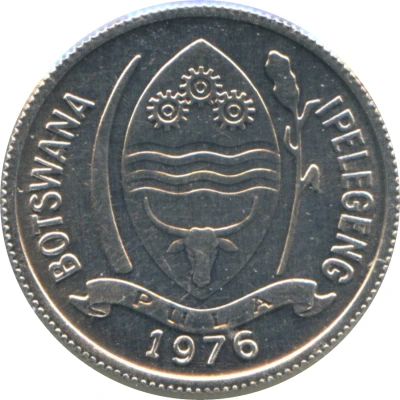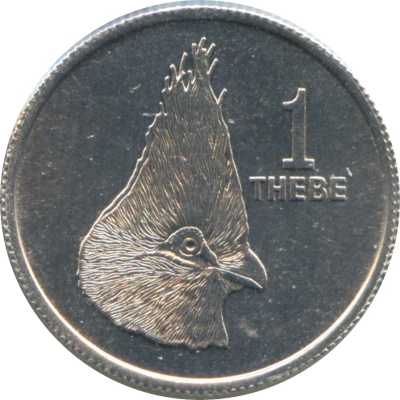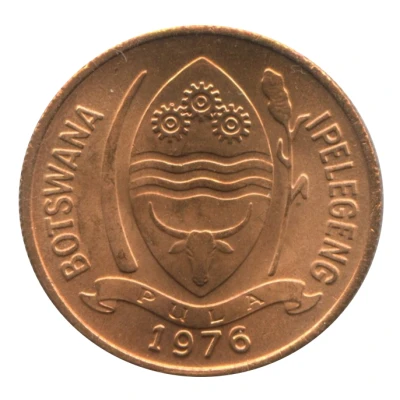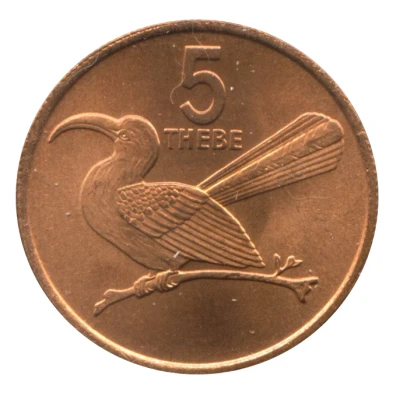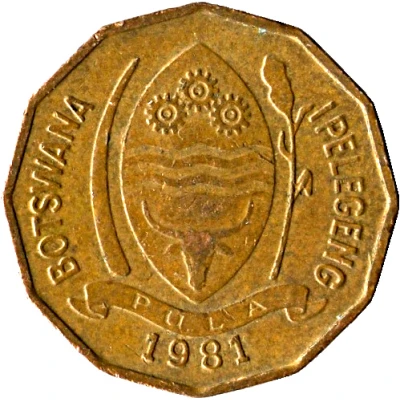
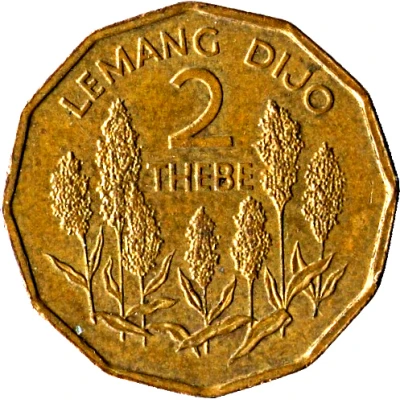

2 Thebe World Food Day; FAO
| Bronze | 1.8 g | 17.4 mm |
| Issuer | Botswana |
|---|---|
| Period | Republic (1966-date) |
| Type | Circulating commemorative coin |
| Years | 1981-1985 |
| Value | 2 Thebe (0.02 BWP) |
| Currency | Pula (1976-date) |
| Composition | Bronze |
| Weight | 1.8 g |
| Diameter | 17.4 mm |
| Thickness | 1.05 mm |
| Shape | Dodecagonal (12-sided) |
| Technique | Milled |
| Orientation | Medal alignment ↑↑ |
| Demonetized | 30 November 1991 |
| Updated | 2024-10-04 |
| Numista | N#3528 |
|---|---|
| Rarity index | 10% |
Reverse
Denomination at top, Sorghum Millet or Great Millet (Binomial Name: Sorghum bicolor)
Script: Latin
Lettering:
LEMANG DIJO
2
THEBE
Engraver: Michael Hibbit
Edge
Plain
Comment
Issue date: October 9, 1981.
An ear of sorghum Millet is also depicted in the Coat of Arms of Botswana.
What does the word "Pula" mean? Pula literally means "rain" in Tswana language, because rain is very scarce in Botswana (most of the surface of Kalahari Desert is situated here) and therefore valuable and a blessing. The word also is the national motto of the country.
What does the word "Ipelegeng" mean? The word "Ipelegeng" literally means "to carry your own weight" or "to be self sufficient or independent", in general has got different meanings in Tswana language. Ipelegeng is also a South African city and a Botswana program created for reducing the poverty in the country.
Interesting fact
One interesting fact about this coin is that it was issued to commemorate World Food Day, which is celebrated on October 16th every year. The coin's design features a stylized image of a farmer and a sheaf of wheat, symbolizing the importance of agriculture and food security.
Price
| Date | Mintage | VG | F | VF | XF | AU | UNC |
|---|---|---|---|---|---|---|---|
| 1981 | 10000 | - | - | - | - | - | - |
Values in the table are based on evaluations by sales realized on Internet platforms. They serve as an indication only for 2 Thebe (World Food Day; FAO) 1981-1985 coin.
